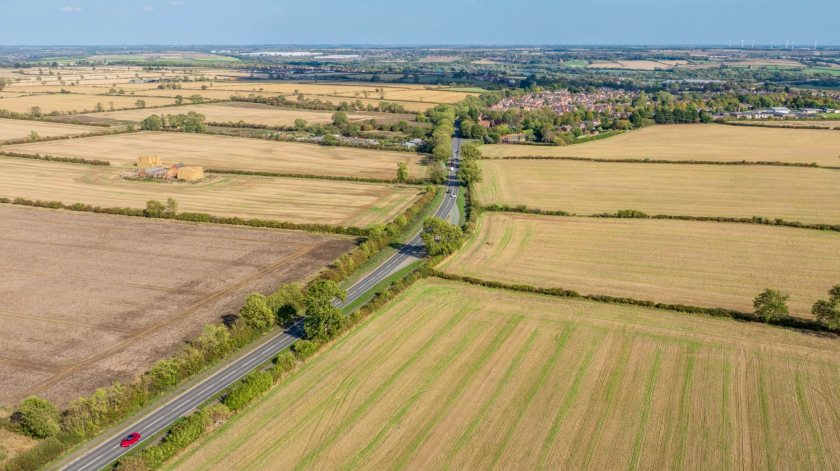
Farmland prices have fallen for the first time since 2020, with new figures showing widening gaps between top-quality farms and poorer land as confidence across the sector falters.
The latest Farmland Market Update from Carter Jonas reports that average arable land values dropped 1.5% in the third quarter of 2025, accelerating from a 1.1% fall in Q2.
Pasture values also declined, down 1.2%. That leaves average values at £9,556 per acre for arable land and £7,806 for pasture.
It is the first year-on-year fall in almost five years, with arable values down 1.7% and pasture down 1.1% compared with 2024. Prices had either risen or remained steady for 17 straight quarters before this decline.
While overall averages are slipping, Carter Jonas notes that performance varies sharply depending on quality and location.
Well-located commercial farms with strong buyer interest are still attracting bids above the guide price, but isolated units or secondary ground are struggling to sell.
Andrew Chandler, head of rural agency at Carter Jonas, said: “Some segments of the farmland market remain resilient. This is especially true for ‘best-in-class’ assets which remain scarce and can attract national interest, resulting in a divergence in prices.
"Well-positioned, high-quality assets continue to command strong values, while secondary and tertiary land is seeing downward adjustments.”
He added that local supply and demand was proving critical, with significant regional variation in how farms are performing.
Market uncertainty has been fuelled by delays in government funding announcements and speculation about changes to inheritance tax reliefs.
Sophie Davidson, research associate at Carter Jonas, said many are taking a cautious approach ahead of the Chancellor’s autumn budget on 26 November.
“Speculation that the autumn budget will bring further setbacks has prompted some to adopt a ‘wait-and-see’ approach as they await further clarity on the government’s approach to tax and agricultural policy,” she explained.
Economic conditions are also adding pressure. Inflation stood at 3.8% in August, the highest since 2024, while the Bank of England’s base rate remains at 4.0%.
Analysts expect it may fall to 3.5% by the end of the year, but higher borrowing costs are still holding back buyers reliant on finance.
“This continues to weigh on investment appetite among those reliant on financing, leaving the market largely sustained by rollover funds and institutional capital,” Davidson added.
With policy uncertainty and economic headwinds still shaping sentiment, Carter Jonas expects caution to dominate the market in the months ahead.
High-quality farms are likely to hold their value, but secondary land faces further pressure until confidence improves.
